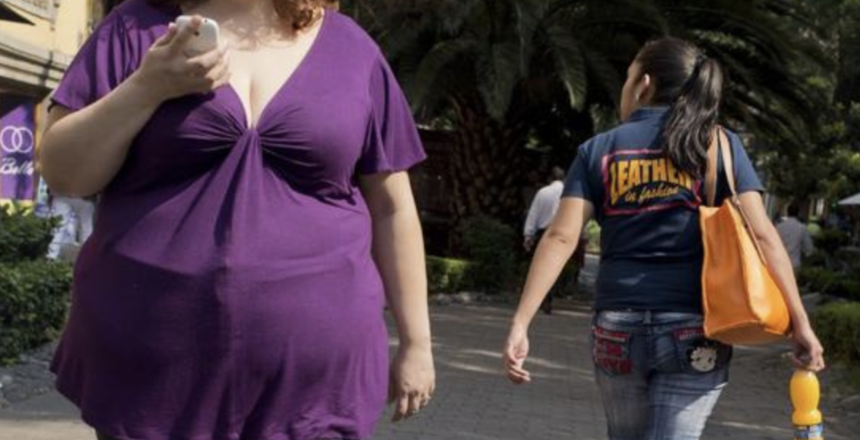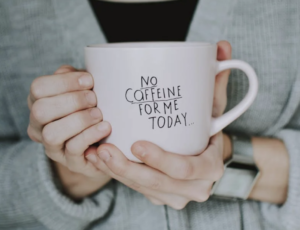An effigy of hate, discrimination & intolerance
Originally published May 1, 2019. The headless fatty, a term made popular in 2007 by activist Charlotte Cooper, refers to photographs or videos of anonymous obese people used in news media stories about obesity. The headless fatty is seen walking while drinking a diet soda, sitting in front of a large plate of burgers and fries, or eating other foods considered unhealthy. Headlines and captions read, Obesity leads to an early death, and Obese? That’s because you eat too much, says top Doctor, or Obesity costs health system $147 billion: study says, which smacks of shaming the obese person and says its killer fat.
I’ve disliked that phrase since an editor of mine told me to go out and take a picture of an obese person from the waist down. It would be better if the picture had some unhealthy food. A “headless fatty”, writes Cooper, a board member of Fat Studies: An Interdisciplinary Journal of Body Weight and Society and blogger about fat at Obesity Time Bomb, are photograph features of one or more fat people, usually in a public place and unaware of being photographed, with his or her head cropped out of the image.
In a nutshell, it’s dehumanizing and results in the continued attack of obese people. The lack of a face makes the subject no longer a person, but a symbol. As Cooper writes,
“As Headless Fatties, the body becomes symbolic: we are there but we have no voice, not even a mouth in a head, no brain, no thoughts or opinions. Instead, we are reduced and dehumanized as symbols of cultural fear: the body, the belly, the arse, food. Nutrition and exercise, under the media obesity watch, is rarely associated with non-obese people who also struggle with those issues.”
Media buries their heads in the sand
Even with Dr. Cooper’s 2007 revelation, the media and the general public continued to bury their heads in the sand, until an L.A. Times photobomb, was posted on their Website in July 2014. (Note: The image has since been removed).
What makes this image dehumanizing is the contrast in depiction between the thin woman and the obese woman, who writes about anti-obese discrimination groups. The thin woman is depicted naturally. She has a head. Symbolically, under Charlotte Cooper’s terms, that makes her a whole person with brains, a voice, and a vision. She’s got it going on.
The obese woman, who takes up 50 percent of the space in the photograph (a great job from the perspective of the photo-journalist), is put upon a dehumanized platter, policed, and judged by the imbruting and fault-finding use of this image. She has no brains – she doesn’t need any: she has no head, after all. Nor does she have a vision, or a voice. She is an effigy… of hatred, discrimination, and intolerance! Who do you want to be like?
Some research suggests that 70 percent appear to be taken without permission, while 30 percent appear to be stock images with most appearing to have a 40+ Body Mass Index. The clothing is casual, too small, or too big. Given that people of the size generally shown comprise only about five to six percent of those labelled obese and less than two percent of the general population, the constant use of their images to illustrate these articles also exaggerates the extent of the problem.
The study on obesity and media
A 2015-2016 study set out to examine public perceptions of obesity-related public health media campaigns with specific emphasis on the extent to which campaign messages are perceived to be motivating or stigmatizing. The ultimate conclusion of the study demonstrated a dislike of fatness makes anti-fat attitudes persist even after people are exposed to research showing that a person can be fat and healthy.
“Our findings suggest that simply covering research showing that people can be both fat and healthy will not suffice to reduce prejudice,” said Dr. Frederick, one author of the study. He added that “the takeaway message from these experiments is that news coverage of medical studies influences people’s attitudes toward obesity. Only the fat rights frame, however, reduced prejudice in their responses.” The ultimate conclusion of the study demonstrated that in the contemporary US, a visceral dislike of fatness makes anti-fat attitudes persist even after people are exposed to research showing that a person can be fat and healthy, leading to stigmatization.
The sitcom stigmatization
That stigmatization is also found in the comedy situations of obese people used by television, which goes almost unnoticed. Images such as overweight people eating fast food or drinking soda, with uncovered stomachs, or in an unflattering side or rear views, headless, and the ridiculed overweight characters garner laughs and ratings and affect how we view overweight people from a young age.
Here too, obese characters are shown overindulging in junk food and are less likely than thinner characters to be involved in romantic relationships. Remember “Fat Monica” on the hit show Friends? It’s the most cited example. Thin Monica is hot, good-natured and likable, but in a few episodes, Monica is wearing a fat suit in a flashback show. She is objectified and portrayed as pathetic, emotionally gouging on food.
It doesn’t stop at sitcom television
Fat Stigmatization in Television Shows and Movies: A Content Analysis, authored by Susan M. Himes and J. Kevin Thompson, in 2007, examined the phenomenon of fat stigmatization, or “fattertainement”, messages presented in television shows and movies. The analysis was used to quantify and categorize fat-specific commentary and humour. Researchers targeted 135 scenes from television shows such as The Golden Girls (1985–1992), Friends (1994–2004) and movies such as The Nutty Professor (1996), Thinner (1996), and South Park: Bigger, Longer, and Uncut (1999) to name a few.
How the media portrays society is not only reserved for the obese. Poverty and homelessness are inaccurately depicted throughout the mass media. How homelessness is distorted in the media, Meriah Barajas writes in 2015, “News outlets, for one, too often take the humanity out of the information they provide.” Barajas also writes, “Although these numbers might be informative when describing the severity of homelessness, listeners and readers often feel far removed from issues such as the extent of homelessness, poverty and the affordable housing shortage. Numbers are not as impactful because there is no human aspect tied to them to make them relatable.”
Canadian Obesity Network Image bank
A recent Rudd Centre study found that 72 percent of photographs paired with online news stories about obesity are stigmatizing toward individuals with obesity. Additionally, 65 percent of videos paired with online news stories about obesity stigmatize overweight/obese adults, and 77 percent of videos stigmatize youth overweight and obese.
In response, the Canadian Obesity Network (CON) in an effort to reduce pejorative portrayals of persons with obesity in media reporting, created an Image Gallery that provides a collection of photographs that individuals with obesity in ways that are positive and non-stereotypical. These images provide a fair and non-biased representation of youth and adults who are overweight and obese.
What you can do
It is useful to identify one’s own bias. Asking the following questions can be helpful in this regard: 1. Do I make assumptions based only on weight regarding a person’s character, intelligence, professional success, health status, or lifestyle behaviours? 2. Am I comfortable working with people of all shapes and sizes? 3. Do I give appropriate feedback to encourage healthful behaviour change? 4. Am I sensitive to the needs and concerns of obese individuals? 5. Do I treat the individual or only the condition?







